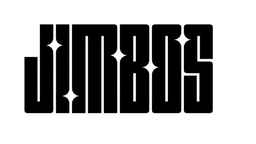How to Safely Decontaminate a Ceramic Coated Vehicle (Without Stripping Protection)
One of the biggest misconceptions about ceramic coatings is that they make decontamination a thing of the past. The truth? Ceramic coatings still collect iron, fallout, and bonded contaminants—they just make removal easier, not unnecessary.
If you want your coating to stay slick, glossy, and hydrophobic for the long haul, a proper decontamination routine is key. In this guide, we’ll show you how to safely remove those hidden contaminants without stripping your coating.
What Is Decontamination, and Why Is It Important?
Decontamination is the process of removing bonded contaminants from your vehicle’s surface. This includes:
- Iron particles (from brake dust and rail dust)
- Industrial fallout
- Tree sap and organic film
- Mineral deposits from hard water
Even on ceramic-coated vehicles, these contaminants can embed into the top layer of the coating. If left unchecked, they clog the surface and reduce slickness, beading, and overall performance.
How Often Should You Decontaminate a Coated Car?
We recommend doing a full decon every 3–6 months depending on driving conditions. If your vehicle sees lots of miles, sits outside near trees, or is exposed to rail or brake dust, you may want to do it quarterly.
Step-by-Step: How to Decon Without Stripping Ceramic Coating
Step 1: Pre-Soak with a Ceramic-Safe Soap
Start with a thick pre-soak using The Super Soaper. This pH-neutral foam lifts loose dirt and road grime without harming your coating. Let it dwell for 3–5 minutes, then rinse thoroughly.
Step 2: Apply an Iron Remover
Spray a dedicated iron remover onto the paint, especially on lower panels and behind wheels. Let it sit for 2–4 minutes until you see it react (turning purple or red). Rinse thoroughly. This step removes embedded metallic particles that regular soap can't touch.
Step 3: Use a Clay Mitt or Clay Towel
Load up a bucket with fresh soapy water using Super Soaper again for lubrication. Then gently glide a clay mitt or towel across the surface to remove bonded contaminants like overspray, sap, and stuck-on grime.
Pro tip: Use clean microfiber towels to wipe the surface between sections to monitor smoothness and avoid marring.
Step 4: Rinse and Dry Thoroughly
Rinse the car one final time and dry using the Massive Drying Towel. This prevents water spots and preps the surface for reapplication of a ceramic spray.
Step 5: Rejuvenate with a Spray Coating
Now that the coating is clean and decontaminated, finish with a layer of Tough As Shell. It reactivates water-beading, restores gloss, and maintains slickness—without layering wax or polymers that clog the coating.

What If My Coating Is Still Failing After Decon?
If water is still clinging to the surface or it feels rough, your coating may be at the end of its lifecycle. In that case, consider reapplying a high-quality wipe-on ceramic like Gloss Boss after a full strip and prep.
Why This Process Matters
Skipping decon leads to clogged coatings, reduced hydrophobics, and poor wash results. By taking 30–45 minutes every few months to properly decontaminate your vehicle, you’ll dramatically extend the life and appearance of your ceramic protection.
🧽 Products Featured in This Guide:
- The Super Soaper – pH-neutral foam wash (or Amazon)
- Tough As Shell Ceramic Spray – Hydrophobic booster
- Gloss Boss Ceramic Coating – Long-term wipe-on ceramic
- Massive Drying Towel
- Orange Wash Microfiber Towel
Don’t just maintain the look of your coating—maintain its performance. A clean coating is a working coating.




